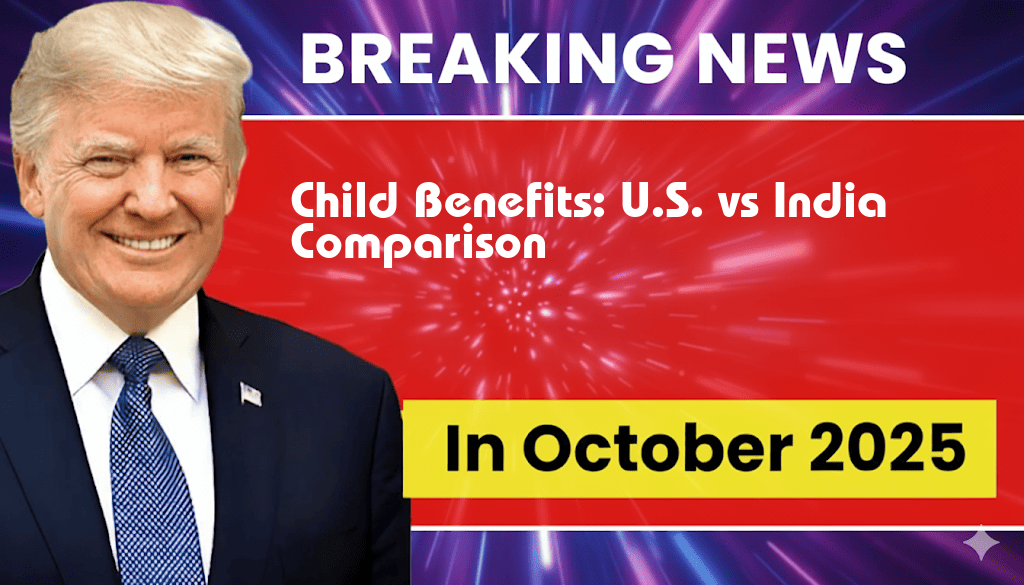Child Benefits Comparison: U.S. vs. India
As governments worldwide strive to support families, child benefit programs have become a focal point for economic aid. In the United States, families with children can claim a tax credit of up to $2,200 per child under the Child Tax Credit program, which has undergone significant changes in recent years. In contrast, India offers a more substantial benefit, with an annual child benefit amounting to approximately ₹1,65,000 (around $2,000) under various welfare schemes. This article explores the implications of these financial supports, comparing their effectiveness and impact on families in both nations.
Understanding Child Benefits in the U.S.
The Child Tax Credit (CTC) is designed to alleviate the financial burden on families with children. Changes implemented in 2021 under the American Rescue Plan temporarily expanded the credit, allowing eligible families to receive up to $3,600 for children under six and $3,000 for those aged six to 17. However, the standard credit reverts to $2,200 per child for the 2022 tax year unless further legislative action is taken.
Eligibility and Application
- Families must meet specific income thresholds, with the full credit available to individuals earning less than $200,000 or couples earning under $400,000.
- The credit phases out for incomes above these thresholds.
- Families can claim the credit when filing their federal income taxes, which provides a direct reduction in tax liability.
Child Welfare Programs in India
India’s approach to child welfare encompasses a variety of programs aimed at improving child health and education. The ₹1,65,000 benefit primarily comes from the combination of direct cash transfers and various subsidies provided under schemes like the Integrated Child Development Services (ICDS) and the National Food Security Act (NFSA).
Components of the Indian Child Benefit
- Cash transfers are provided to families based on the number of children and their age.
- Subsidized food and healthcare services are also available to ensure the well-being of children.
- Educational support is provided through various government initiatives aimed at promoting school attendance and reducing dropout rates.
Comparative Analysis
| Aspect | United States | India |
|---|---|---|
| Annual Benefit | $2,200 per child | ₹1,65,000 per child (approx. $2,000) |
| Eligibility Criteria | Income-based, with phase-out for higher earners | Based on family size and poverty levels |
| Support Type | Tax credit | Direct cash transfers, subsidies, and services |
| Focus Areas | Financial relief for families | Health, nutrition, and education |
Impact on Families
The effectiveness of child benefits is often measured by their impact on poverty rates and overall child welfare. In the U.S., the CTC has been credited with lifting millions of children out of poverty. However, its reliance on tax filings means that some families, particularly low-income households without tax obligations, may not fully benefit.
In contrast, India’s multi-faceted approach aims not only to provide financial support but also to ensure access to essential services. While the cash benefit is substantial, the real impact is seen in improved health and education outcomes, addressing the root causes of poverty.
Future Considerations
As both countries evaluate their child benefit programs, discussions surrounding sustainability, inclusivity, and efficiency are essential. The U.S. may consider broadening access to its child tax credits, while India might explore ways to streamline its numerous child welfare initiatives for greater effectiveness. The global perspective on child benefits highlights the importance of tailoring programs to meet the unique needs of families in different socio-economic contexts.
For further reading on child tax credits in the U.S., visit Forbes. To learn more about India’s welfare schemes, check out Wikipedia.
Frequently Asked Questions
What is the child benefit amount in the U.S.?
The child benefit amount in the U.S. is a credit of $2,200 per child, aimed at supporting families with children.
How does India’s child benefit compare to the U.S.?
In India, the child benefit is approximately ₹1,65,000, which is significantly higher when converted to U.S. dollars, reflecting different economic conditions and government policies.
What factors influence the child benefit amounts in different countries?
Factors influencing child benefit amounts include economic conditions, government budget allocations, and social welfare priorities of each country.
Are there any additional benefits available for families in the U.S.?
Yes, families in the U.S. may also be eligible for other tax credits and assistance programs, which can further support their financial needs.
How can families apply for child benefits in both countries?
Families in the U.S. can apply for child benefits through the IRS, while in India, applications are typically submitted through local government offices or online portals.
